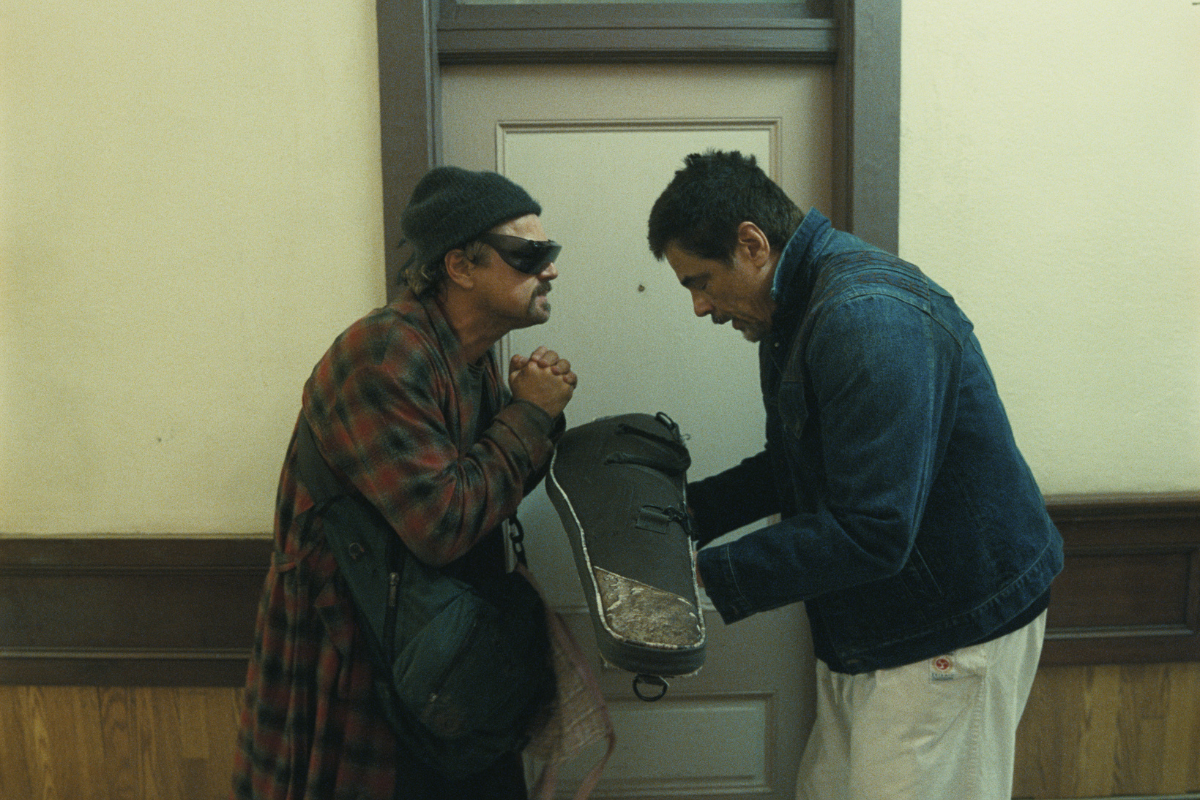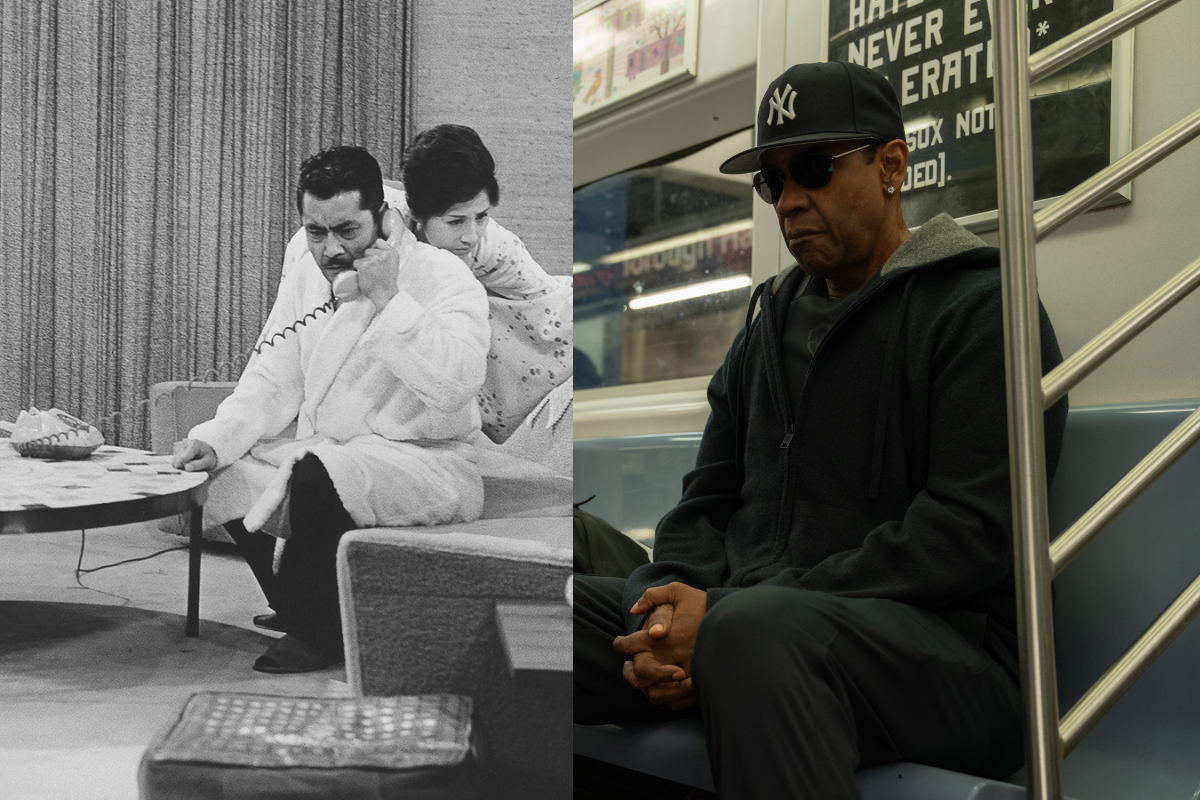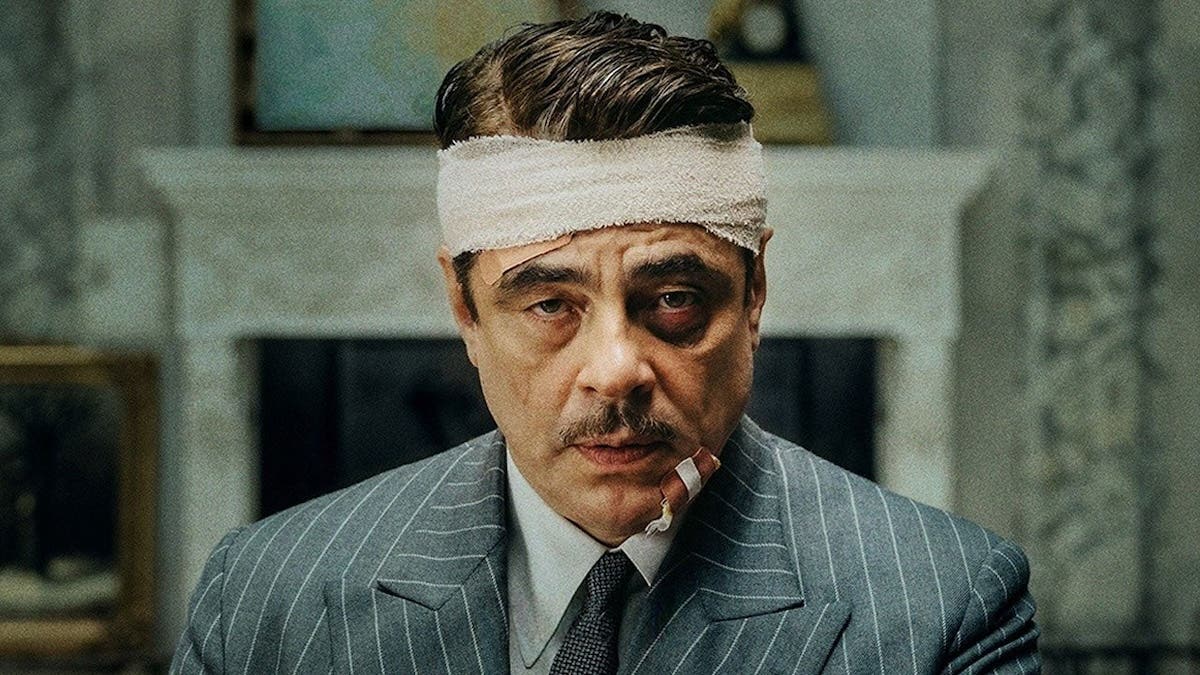UNDERSTANDING SCREENWRITING: Two Great Oldies and a Newbie
The films are ‘Suddenly’ (1954), ‘Honey Don’t’ (2025), and a Robert Redford appreciation-watching of ‘All the President’s Men’ (1975).
Another One You Have Never Heard Of.
Suddenly (1954. Written by Richard Sale. 77 minutes)
Richard Sale started writing pulp fiction for a variety of magazines in the Thirties. After the war he came to Hollywood. He was best known as a writer of musicals in the Fifties such as Gentlemen Marry Brunettes (1955: a sequel of sorts to Gentlemen Prefer Blondes [1953: Sale’s coauthor was his wife Mary Loos Sale, who was the niece of the original author of Blondes, Anita Loos: don’t you wish you had a family chart of everybody in Hollywood who was related to everybody else?])
Every so often Sale returned to his pulp roots. Suddenly was one of those. His script is a tight (look at the running time) thriller about an attempted assassination of the President of the United States. A train carrying the president is due to stop in Suddenly, a small California town one Saturday afternoon. Somebody or somebodies have paid John Baron a pile of money to kill the president when he gets off and the train and into his limo to go fishing.
The feds have learned the plot is afoot and show up to try to protect their boss. They get in touch with Sheriff Tod Shaw, who assures them he knows everybody in town. The Secret Service guy tells him they need to be on the lookout for a stranger.
Meanwhile Baron and his two gang members have taken over a house on the hill and set up his rifle at the window.
Suspense as twists and turns ensue. Shaw ends up at the house and along with his girlfriend a war widow named Ellen and her son Peter. Also in the house is the father of her late husband. The suspense builds.
No, I am not going to tell you how it ends. But the film is perfectly done. The town scenes, shot in Saugus, California, are beautifully photographed by Charles G. Clarke, on loan from his early CinemaScope work at 20th Century-Fox. I interviewed Clarke in 1970 about his work at Fox, but had no idea at the time (there was no IMDb) he had done this film.
The director is Lewis Allen, an Englishman who came to America in the early forties. He not only directed suspense films, but light comedies and swashbucklers, and later a lot of television.
The cast is interesting. Shaw is played by Sterling Hayden, this time on the side of the law afterThe Asphalt Jungle (1950) and before The Killing (1956), but just as tough. The Secret Service guy is played by the great character actor Willis Bouchey, although he makes a typical actor’s mistake. He’s read the script and knows his character is going to die early in the film, so he overacts to make sure he makes an impact. One of the gang members is played by Paul Frees, who after this film left acting and made a career of doing voice work.
Let’s see, what else is there? Ah yes, John Baron. He is played by Frank Sinatra. He had made From Here to Eternity, but not yet won the Oscar for it. A year later he would do The Man With the Golden Arm. Eternity and Arm are his two best known dramatic performances, but I think his performance in Suddenly is his greatest performance. He played other tough guys, but as Baron he shows a feral side of Sinatra we never see in his other films. It is not just powerful, but creepy in the way he was not elsewhere. I like the work everybody else does in this film but Sinatra towers over everything else. There is a new 4K restoration of the film, if what I have said is not enough to make you see it.
Number Two In The Promised Lesbian Trilogy.
Honey Don’t! (2025. Written by Ethan Coen & Tricia Cooke. 89 minutes)
Last year Coen & Cooke (he also directs, she also edits) gave us Drive-Away Dolls. You can see what I thought of it here.
I had quibbles about the writing in Dolls. The writing here is much sharper. Now Tom, you may ask, why do you think it is sharper when a lot of the critics of this film said the script was a mess? Well, it is all the fault of all those darn Film Schools. Film students who are now critics have been taught that anything good in a film comes from the director and everything bad comes from the writer or producer. If you have been reading this column for any length of time you know that is crap. What happens is that the critical fans of directors are looking at the movies in terms of directorial “touches,” and not paying attention to scripts. I have seen this off and on for thirty or more years and it still ticks me off
OK, the script for this film is complicated. A car goes over a cliff and the woman inside is dead. Before the cops arrive, a woman pulls up on a motorcycle, checks the body, takes a ring and then… goes swimming nude in a nearby lake. But that woman is not the main character.
The main character is Honey O’Donahue, a private eye in Bakersfield, California (played very effectively by towns in New Mexico). She gets interested in the case, but then her niece, who has been ogled by an old geezer, disappears. The geezer is not who you think. Then some typical Coen bloodshed takes place involving a drug-running operation out of a fundamentalist church. And so on. You do have to pay attention to keep up because Coen and Cooke keep going around corners you did not know were there. Sure, watch the great cinematography of the southwestern American deserts, but keep paying attention to the characters and what is going on.
Having said how much I like the script, I have to admit it falls apart in the last two scenes. Several lines of action are not finished off satisfactorily, and the very last scene seems tacked on in a way that makes you think it is the setup for the sequel. It is the equivalent of Darth Vader escaping from the exploding Death Star at the end of Star Wars (1977, the first one). I have no idea if Coen and Cooke are thinking that way, but they are thinking of a trilogy.
Oh, about the sex in the film. There is a lot of it. The end credits say there were two intimacy coordinators. I would have thought they would have needed more.
Robert Redford: An Appreciation, of Sorts.
All the President’s Men (1975. Screenplay by William Goldman (and some other writers, uncredited by IMDb) based on the book of the same name by Carl Bernstein and Bob Woodward. 138 minutes)
Robert Redford died in September and the media were full of comments and observations about him. What I want to do here is discuss his collaboration as the de facto producer of All the President’s Men with the writer of record of the film, William Goldman. Much of this is from the chapter on the film in Goldman’s essential book for screenwriters Adventures in the Screen Trade and much of it first appeared an earlier column item back when I wrote this column for Creative Screenwriting, which you can read here.
In 1972 Redford was doing an imitation whistle-stop tour through Florida for The Candidate in which he appears as a young guy running for U.S. Senator from California. There were a number of reporters on the train. The burglary of the Democratic offices at the Watergate hotel had just happened. Redford was reading some of the coverage by two young reporters at the Washington Post, Carl Bernstein and Bob Woodward. Redford wondered aloud to the reporters why there were not bigger names covering the story.
The reporters, typical cynical newspapermen, said they doubted the whole story would ever come out. As the stories progressed, Redford thought there might be a film in the story of the reporters. He met and talked with Woodstein, as the two were nicknamed. They were planning a book on it, but the focus of it was the story itself. Redford suggested it would be more interesting about the two neophyte reporters uncovering a big story. They took his suggestion and the book became the best seller All the President’s Men.
Redford hired William Goldman as the screenwriter. Goldman had won an Oscar for writing the movie that made Redford a star, Butch Cassidy and the Sundance Kid. Goldman also wrote two scripts Redford had starred in, The Hot Rock (1972) and The Great Waldo Pepper (1975). Goldman started working his way through the manuscript of the yet-unpublished book, as well as other material that he got from the reporters.
He decided there was way too much material, and decided to end the film half-way through the book. He went to Redford and Redford agreed.
Goldman’s idea was to stop at the point where Woodstein were at their lowest point: they had made a mistake that had got into the paper and threatened to screw up their whole pursuit of the truth. Goldman’s thinking was that everybody knows how the story ends, so you don’t need to see it. It’s an approach that I would not generally recommend, since it could frustrate an audience who want to see the whole story. It works here because Goldman gives us so much rich detail leading up to his ending, we feel we have got enough of what we need. I don’t know how you can know if that is going to work. The fact that neither Redford nor anybody else objected tells you that Goldman presented his version to them in a convincing way.
One of the reasons it works so well is that a lot of the detail comes from the enormous variety of characters Woodstein has to deal with. Many of them do not want to, or are afraid to, talk, which makes the scenes with them rather tense. Some do talk, like Donald Segretti, who was in charge of dirty tricks for the Nixon campaign. Boy, does he talk, and talk, and talk.
On the other hand, to juice up the ending a little bit, Goldman has Woodstein talking to their editor Ben Bradlee about how they think they are being followed and spied on. Goldman just leaves it at that, so we think it is probably true, but Woodstein admit in the book there was no evidence they ever found that showed that was actually happening.
In Goldman’s essay in Screen Trade, he lays out the terrible things that happened to him and the script after his first draft. Carl Bernstein and his then-girl friend Nora Ephron (yes, that Nora Ephron) wrote their own draft of the script, which downplayed Woodward and played up Bernstein’s as an all-round ladies man. Goldman was appalled that Redford insisted he read that draft. Goldman writes that he understands why a producer would do what he did, given that Bernstein is a major character and Redford wanted to stay on his good side. Even good producers can inadvertently screw over the writers, since the producer is focused on getting the film made. Redford later apologized, but he and Goldman never worked closely together again, although Redford had a role in A Bridge Too Far (1977), which Goldman had written.
If Bernstein wanted romantic scenes, Redford decided he wanted romantic scenes for Woodward (Redford played Woodward). Goldman wrote them, but they were never used, and only one of the Bernstein-Ephron scenes was used. It’s the one where Bernstein hustles his way past a secretary. And it is completely fictional.
Eventually Goldman was taken off the picture and other writers were hired. When Goldman saw the final film, he recognized his structure, although some scenes were rearranged from his order, and new scenes were added.
Goldman, the only credited screenwriter, won the Oscar for Best Adapted Screenplay, but as he writes in his book, if he had it to do all over again, he would not go near All the President’s Men.
Prior to writing this item I watched the film again, although I have seen it many times since it came out. I watched it on Prime Video, and they handled the ending even worse than they usually do. The ending is a collection of news clips from television and Washington Post and other newspaper headlines that follow the rest of the story through to Nixon’s resignation. Prime Video cut away from the montage. Now I lived through Watergate and I know what followed, but a much younger person watching Prime Video’s version would have no idea what happened to Nixon. No wonder so many young people are ignorant of history.
Tom Stempel is a Professor Emeritus at Los Angeles City College, where he taught film history and screenwriting from 1971 to 2011. He has written six books on film, five of them about screen and television writing. You can learn more about his books here. His 2008 book Understanding Screenwriting: Learning from Good, Not-Quite-So- Good, and Bad Screenplays evolved into this column. The column first appeared in 2008 at the blog The House Next Door, then at Slant, and then Creative Screenwriting before it found its forever home at Script.
In the column he reviews movies and television from the standpoint of screenwriting. He looks at new movies, old movies, and television movies and shows, as well as writing occasional other items, such as appreciations of screenwriters who have passed away, plays based on films, books on screenwriting and screenwriters, and other sundries.
In September 2023 Tom Stempel was awarded the inaugural Lifetime Achievement in the Service of Screenwriting Research by the international organization the Screenwriting Research Network.







